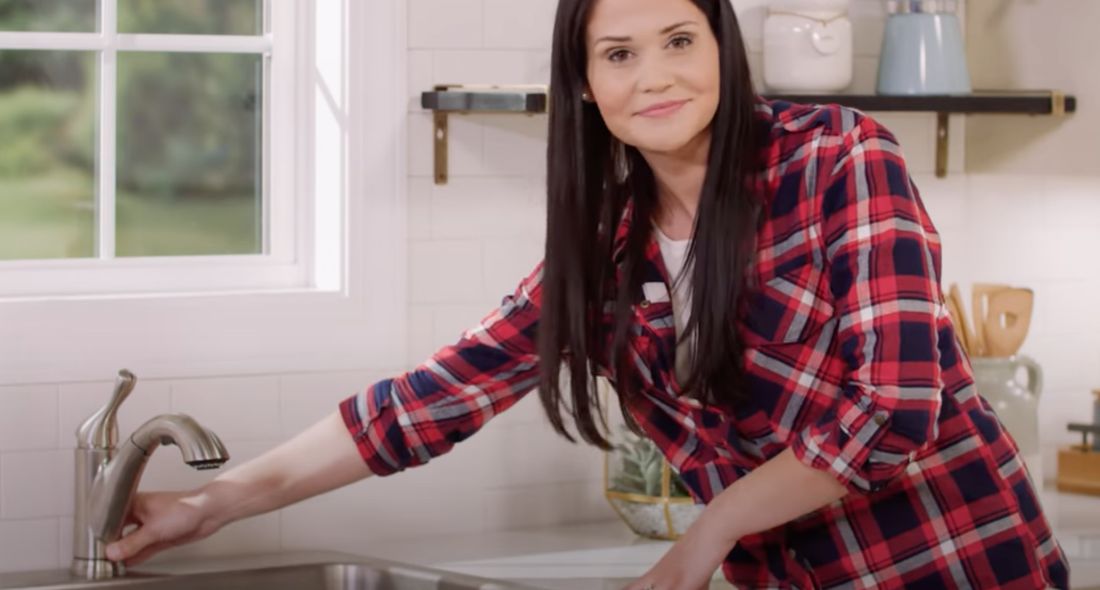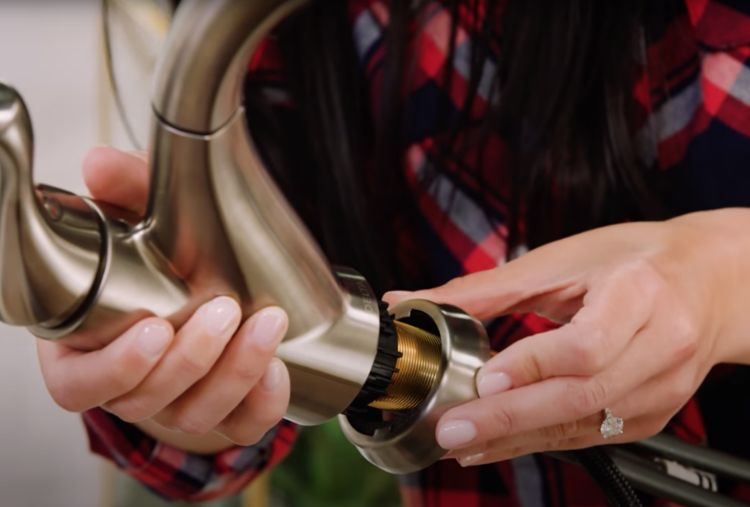Which It's Needed to Correct a Broken Faucet
Which It's Needed to Correct a Broken Faucet
Blog Article
Almost everyone maintains their personal assumption involving What Causes Leaky Faucets & How To Fix Them.

Leaking taps could seem like a small inconvenience, however their impact surpasses simply the annoyance of the sound. From wasting water to sustaining unnecessary monetary prices and health and wellness dangers, ignoring a trickling faucet can result in different consequences. In this article, we'll look into why it's essential to resolve this common family concern quickly and properly.
Waste of Water
Environmental Impact
Leaking taps add dramatically to water wastefulness. According to the Environmental Protection Agency (EPA), a solitary tap trickling at one drip per secondly can throw away greater than 3,000 gallons of water annually. This not only stress water sources however additionally affects ecological communities and wild animals based on them.
Financial Costs
Enhanced Water Expenses
Beyond the environmental influence, trickling taps can inflate water costs significantly. The gathered wastage with time equates right into higher utility expenses, which can have been stayed clear of with prompt fixings.
Possible Residential Or Commercial Property Damage
In addition, long term leaking can lead to harm to components and surface areas surrounding the tap. Water build-up can cause discoloration, corrosion, and also structural concerns if left unattended, causing additional fixing prices.
Health and wellness Problems
Mold and Mold Growth
The continuous visibility of moisture from a leaking tap develops an optimal setting for mold and mildew and mold growth. These fungi not only jeopardize interior air top quality but also position health and wellness dangers, particularly for individuals with breathing problems or allergies.
Waterborne Diseases
Stagnant water in dripping taps can come to be a breeding ground for bacteria and various other virus, raising the threat of waterborne diseases. Impurities such as Legionella germs prosper in stationary water, possibly bring about significant ailments when consumed or inhaled.
Do it yourself vs. Specialist Repair service
Advantages and disadvantages of DIY Fixing
While some may try to take care of a dripping tap themselves, DIY repair services come with their very own collection of difficulties. Without correct knowledge and tools, DIY efforts can intensify the problem or lead to incomplete repair services, prolonging the problem.
Advantages of Working With a Professional Plumber
Hiring a specialist plumber ensures that the underlying reason for the dripping faucet is dealt with successfully. Plumbing professionals have the knowledge and devices to diagnose and repair tap problems effectively, saving time and reducing the risk of further damages.
Step-by-Step Overview to Dealing With a Dripping Faucet
Tools Required
Prior to attempting to take care of a leaking faucet, collect the required tools, consisting of an adjustable wrench, screwdrivers, substitute parts (such as washers or cartridges), and plumber's tape.
Typical Faucet Issues and Their Solutions
Determine the type of faucet and the certain issue triggering the drip. Common issues consist of worn-out washing machines, corroded valve seats, or damaged O-rings. Describe manufacturer guidelines or online tutorials for detailed support on repair work.
Safety nets
Regular Maintenance Tips
To avoid dripping taps, do regular maintenance such as cleaning aerators, inspecting for leaks, and replacing damaged components promptly. Furthermore, take into consideration mounting water-saving tools or updating to more efficient fixtures.
Significance of Prompt Repair Works
Attending to leaking faucets as soon as they're seen protects against more water waste and potential damage, eventually saving both water and cash over time.
Effect On Residential Property Value
Assumption of Well-Maintained Residential Property
Preserving a residential or commercial property in good condition, consisting of dealing with upkeep issues like dripping taps, enhances its viewed worth and desirability among possible buyers or renters.
Impact on Resale Worth
Characteristics with well-kept plumbing components, consisting of faucets, command higher resale values in the realty market. Attending to dripping faucets can contribute to a positive impression during property inspections and negotiations.
Environmental Responsibility
Individual Payment to Preservation
Taking obligation for taking care of leaking faucets aligns with more comprehensive initiatives toward water preservation and ecological sustainability. Every individual's activities jointly make a considerable impact on maintaining valuable resources.
Lasting Living Practices
By prioritizing punctual repair services and taking on water-saving routines, people contribute to lasting living practices that benefit both existing and future generations.
Conclusion
Dealing with a dripping faucet surpasses plain convenience; it's an essential action toward saving water, reducing monetary prices, and safeguarding health and wellness and residential or commercial property. Whether with do it yourself repair work or specialist assistance, acting to take care of trickling taps is a tiny yet impactful means to advertise liable stewardship of sources and add to a much healthier, extra lasting future.
How to Fix a Dripping or Leaky Faucet
A leaking faucet is one of the most common problems that homeowners encounter, but it being commonplace doesn’t make it any less annoying. The constant drip drip drip of a leaking bathtub faucet, showerhead, or sink tap can disturb your home’s serenity. Left neglected, a dripping faucet can also result in higher water bills and discoloration or mold growth in your sink or plumbing fixtures.
Fortunately, you don’t have to be a trained plumber to know how to stop a dripping faucet. With some basic tools, replacement parts, and a little patience, leaky faucet repair is a breeze. In this article, we’ll explain what causes dripping faucets and how you can fix them.
What Causes a Leaking Faucet?
Kitchen and bathroom faucets come in all manner of designs, but most involve some combination of valves, O-rings, seals, and washers. The O-ring is usually the weakest link, but any one of these pieces can wear down over time. Heat, moisture, temperature fluctuations, minerals, mold, and movement can contribute to warping and corrosion, breaking the watertight seal. This just comes with the territory of being a homeowner. Everything is always subject to wear and tear, and some component parts of your appliances and fixtures need to be replaced on occasion. At least replacement O-rings are cheap!
More rarely, dripping faucets can be a symptom of excessively high water pressure. Were this the case in your home, you would probably notice that the leak is not isolated to one faucet. Water pressure issues are harder to resolve on your own. We recommend contacting a professional plumber if you suspect your water pressure is too high.
How to Fix a Dripping Faucet
Pipe wrench or monkey wrench Allen wrench set Screwdrivers Old towel or rag Shut off the water.
Before you do anything, you need to turn off the water to keep from drenching your kitchen or bathroom. You should find a valve under the sink and against the wall. Once you’ve turned this valve, try turning the faucet on to confirm that the water source has been cut off.
If you can’t locate your local valve for the faucet you’re working on, you can always shut off the water to the house at the main valve. Of course, this will prohibit anyone from using the sinks, showers, or toilets while you’re working on the faucet that’s giving you trouble.
Plug or block the drain.
You’ll be disassembling the faucet and removing some small bits of hardware. Plug the drain with a stopper or rag to avoid the possibility of a small screw falling into your P-trap.
Take apart the faucet assembly.
There are several varieties of kitchen and bathroom faucets, each with its own manner of assembly. For detailed instructions on how to disassemble your faucet, you can refer to the fixture’s manual or contact the manufacturer. If you know whether you have a ball, disc, cartridge, or compression faucet, you can find detailed schematics online.
In general, you need to begin by removing the faucet handles. You might notice a small screw that you’ll need to remove with a screwdriver or Allen wrench. If you don’t see any visible securing hardware, it’s likely hidden under a decorative cap that can be unscrewed or popped off with flathead screwdriver.
Remove each piece methodically, consulting a schematic when necessary. Take notes or arrange the pieces in such a way to make it easier to correctly reassemble the faucet later.
Remove the cartridge.
Once you’ve removed the handles and securing hardware, you should be able to remove the valve cartridge or stem. Some cartridges will slide right out. Other faucet models will require you to loosen a nut with a pipe wrench before you can remove the valve stem.
Examine the exposed hardware.
With the cartridge or stem removed, inspect the component parts. Check the rubber O-rings for wear and tear. Also examine the seat washer for corrosion or other damage. These pieces are usually the responsible parties for a dripping faucet, but it’s worth inspecting the other component parts while you have the faucet disassembled.
Find replacement parts.
Once you’ve identified which faucet component has failed, find an identical replacement. Your local hardware store should have O-rings, seat washers, and other standard components in stock. If you have a luxury or uncommon faucet, you may have to contact the manufacturer for a replacement part.
It’s a good idea to take your old parts with you to the hardware store so you can compare them with the store’s inventory and be sure you’re purchasing the correct replacement.
Reassemble the faucet.
With your new parts in hand, reconstruct the faucet and handles. Don’t be tempted to overtighten screws or nuts. You might think this could create a better seal, but it can instead damage or bend a delicate part of the assembly and create a new problem for you.
Turn on the water and test the faucet.
The only thing left to do is test your work. Unplug the sink, turn the water back on, and try the faucet. Congratulate yourself on a job well done!
https://www.libertyhomeguard.com/how-to-fix-a-dripping-or-leaky-faucet/

As a keen person who reads about Why Are My Faucets Dripping (And Can I Fix It Myself)?, I thought sharing that information was really helpful. So long as you enjoyed our post kindly remember to share it. I love your readership.
Report this page